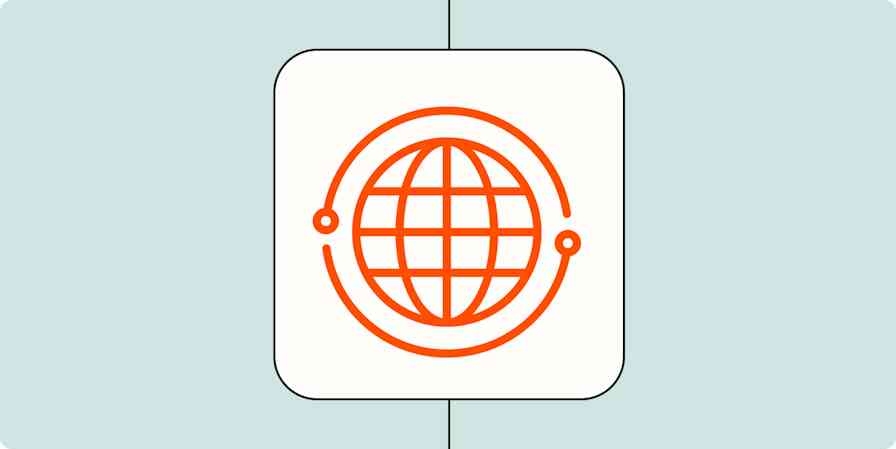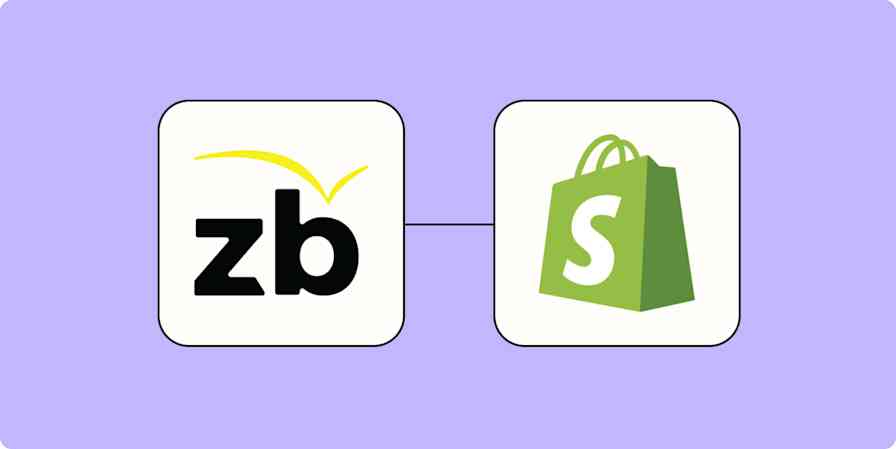As a co-founder, I've had a constant question driving my work: how to get things done quickly and cheaply without compromising quality. I've had many different problems to solve. And there's been a SaaS solution to many of them.
This is how most SaaS solutions help businesses: They offer a technological solution to meet a business challenge, users pay a monthly subscription fee to access that solution and move their business forward. However, if you have complex problems to solve, you will probably need a combination of several different pieces of software. Then, you'll need to get these different software platforms to communicate with each other.
I was well aware of this, but I didn't know how to achieve it—until a salesperson told me to check out Zapier. The salesperson called Zapier a "bridge service" that would let their software communicate with another software platform.
I co-founded two companies—3veta.com, a SaaS company facilitating online meetings and payments, and 365 Data Science, which creates and sells data science courses—and am a data science instructor on Udemy with more than 800,000 students. I've used automation to help me move all three of these endeavors forward.
Here are three of the challenges I've addressed using automation:
Problem: Communicating with customers
At my first startup, 365 Data Science, we didn't have any full-stack software engineers. We were creating courses, so we instead had a bunch of data scientists and content writers.
We sold our courses on Teachable, which was a great place to host on-demand video, but not so great for sending emails to your subscribers. They knew this and offereda number of built-in integrations. We went with ConvertKit and everything worked well for a time.
As time went by, our business grew and so did our email marketing needs. We decided to switch to Keap (then known as Infusionsoft).
The problem was, Teachable didn't have a built-in way to communicate with Keap.
Both Teachable and Keap had REST API support but we had no devs to implement this. We knew how to pull data from APIs, but not how to bridge data sources in real-time. We needed to hire someone to make the connection or learn to do it ourselves.
This takes us back to that primary concern as a business owner: How to accomplish this without spending too much or lowering our quality. Hiring someone would have added costs, and doing it ourselves pulled us away from our course creation tasks.
So instead, we turned to automation with Zapier.
Solution: Send marketing emails to new customers
Our first Zapier use case was to add our newly enrolled Teachable students to the email marketing database in Keap. There was nothing amazing about what we did there. Zapier did all the heavy lifting. This was the starting point for our Zap:
Explore more ways to integrate Teachable with other apps using Zapier.
To date, this Zap has sent more than 200,000 contacts from Teachable into Keap, allowing us to automatically add all new students to our email database. At one point, we were automating millions of tasks each month, sending our students nurture emails, helping them study, and, of course, leading them to purchase the paid product.
Problem: Stagnant conversion rates and capped growth
As we grew, we wanted more robust analysis to help us understand conversions and purchasing behavior. There was no tracking on the payment page, we didn't know how the checkout process was going for our students, we couldn't charge in different currencies. We couldn't even run efficient ads, as we did not know if the people we targeted made a purchase or not.
This hurt our conversion rates and capped our growth.
Solution: Implement our own payment system
We saw the value in having courses on Teachable and email on Keap. So we thought, how about we have the payments on our own website through another software?
We went with FastSpring—a company which has no native integration with Zapier. Instead, they have webhooks and provide good documentation on connecting with Zapier.
We implemented it, and voila!
We had assembled our own Voltron: Our own website + Teachable + Keap + FastSpring. All communicating through Zapier—all without writing software or billing expensive developer hours. With this knowledge and experience, it became much easier to come up with solutions to other challenges.
Keap doesn't support A/B testing? No problem.
You can set up conditional workflows using Paths by Zapier. Through this feature, we could channel customers to different paths (to randomize this, you'd need to write a Python code step). Point being that if we can devise these two paths through Zapier and enable A/B testing for Keap, then it's as if Keap has A/B testing. The same goes for Teachable or any other app that works with Zapier.
We could do A/B tests, build customized flows, apply coupon codes.
I even remember formatting the names of our customers as I like them, because I couldn't bear ALL CAPS. This allowed us to send personalized emails that look like 'Hi Jane', instead of the default behavior: 'Hi JANE'.
We were using Zapier to create features in apps that did not have them—with literally no spend on developers
Problem: Building a prototype without bothering the "costly devs"
3veta.com is a product development company and we have developers available. However, software developers are some of the most expensive employees—even at junior positions. And since we have the same business challenge—providing a quality service without increased costs—if we can save dev time, we do.
Knowing this, I've been thinking about different ways I can minimize their work.
Solution: Catching your own webhooks
We wanted to integrate our system with an email marketing system. This was déjà vu for me.
This time, however, we weren't integrating two third-party SaaS systems. We needed to connect our own system with our email marketing software. We had no native integrations with anyone. And building an integration meant dev expenditure.
Instead of asking them to create a full integration, I asked for a webhook we could use to pass email address, first name, country, and marketing consent along to our email platform.
All of this was pretty standard information for the back-end of our system. So I asked our devs to create a webhook that would send that information out whenever a new sign-up happens. In Zapier, this functionality is called Catch Hook. We then created a Zap that used that webhook as the trigger and had an action to add the contact to our email marketing software.
This took 30 minutes of time from a single developer, as opposed to several hours building a fully integrated solution—probably even involving several developers.
Explore ways to add contacts to email platforms like ConvertKit using webhooks, or get started with other email platforms with one of these guided templates.
Add Mailchimp list subscribers from newly-caught webhooks
Create ActiveCampaign contacts from new caught webhooks
Add Keap Max Classic contacts from newly-caught webhooks
This little trick paved the way for much greater cost savings. I would never again need to ask the developers to integrate an email marketing solution. As long as the webhook worked, I could use Zapier as the mediator between our system and any other third-party system.
This helped us achieve something we wanted very much: a modular business. Modularity means we can add, change or remove the email marketing module without touching our core product.
We've used this strategy to create automation around other events, like someone completing onboarding, receiving our first payment from a customer, or from changes in the purchased plan. We can expand beyond email marketing to set up alerts for our own team so we know about new signups, update the sales team about leads they're working on, and much more.
You can use automation to customize notifications, centralizing them in one place or setting up alerts for specific changes.
Creativity while solving problems
Our CTO once said, "A good leader keeps a project going for as long as possible. They find a way to achieve the common goals as quickly as possible. They find creative solutions for complicated problems and push the whole project forward." Apart from the obvious drivers of a successful business—time and resources—this statement highlights a third ingredient: creativity when solving problems.
I found app automation through a reliable API bridge service added that creativity, even without the technical knowledge it may have looked like I needed at first. With this approach, there is nothing stopping you from unleashing your creativity to achieve much more while using fewer resources.
This was a guest post from Iliya Valchanov, co-founder at 3veta.com and 365 Data Science, and a data science instructor. Want to see your work on the Zapier blog? Check out our guidelines and get in touch.
Related reading:





